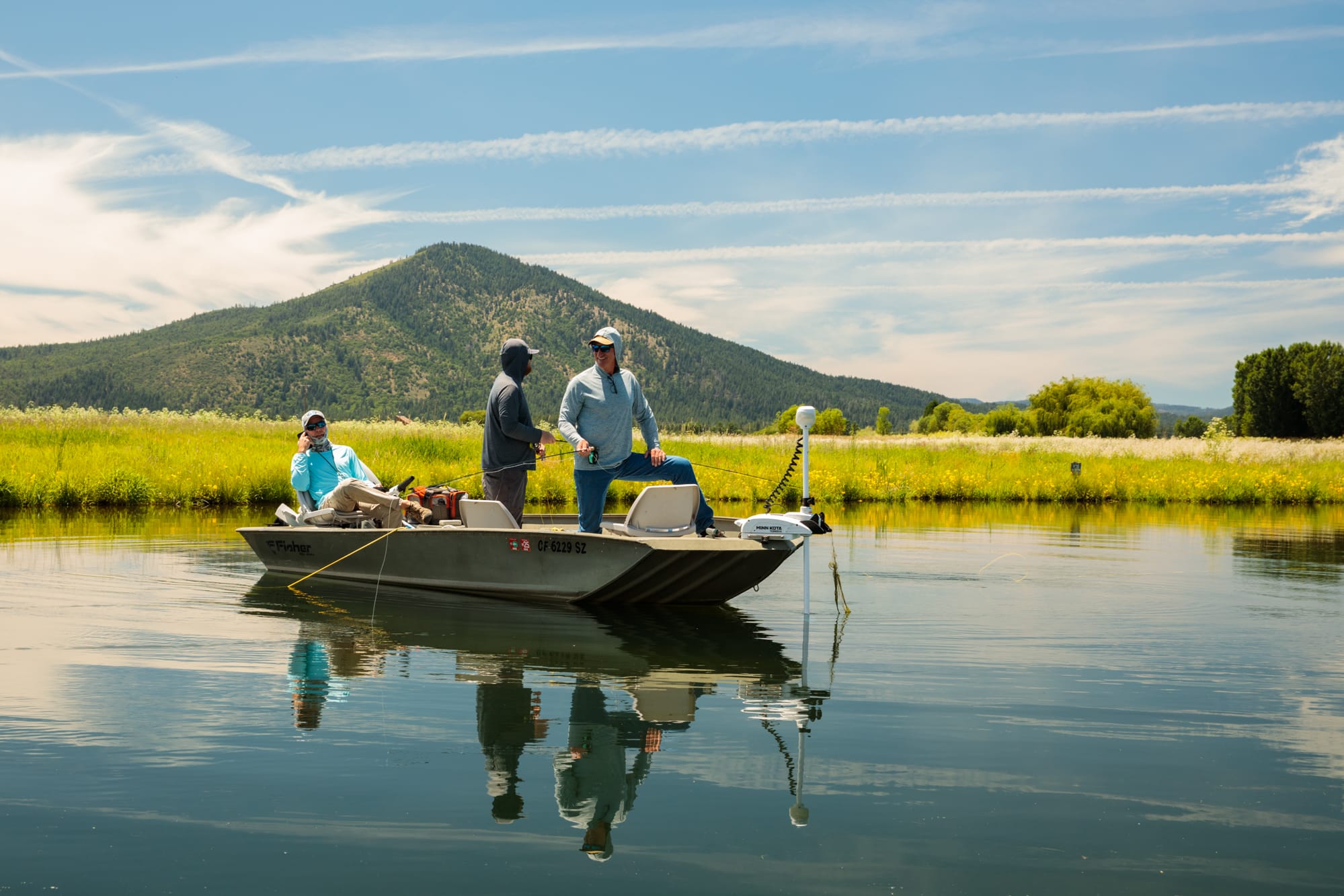The Medicine Lake Highlands complex of public lands, some 30 miles northeast of Mt. Shasta in California’s Cascade region, is a truly remarkable place.
In particular, the waters absorbed and released by this rugged landscape are, where they emerge from the ground, incredibly pure and visually appealing.
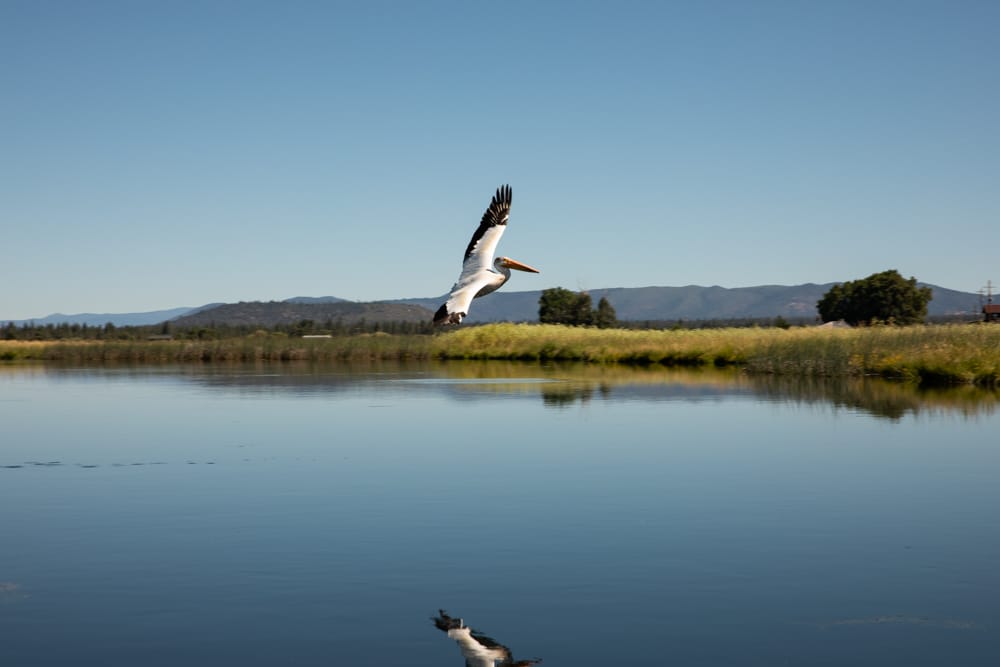
This area has been called Sáttítla for time immemorial by the Pit River Tribe. It is remote and hardly a blip on most people’s radar. Yet it is on the radar of resource developers.
The Pit River Tribe has been fighting for three decades to safeguard this landscape and the waters, cultural values and habitats it provides from proposed development. Last November, the Tribe launched a new initiative to permanently protect the Sáttítla region as a national monument.
Trout Unlimited, Backcountry Hunters and Anglers and other conservation-oriented angling and hunting groups are supporting this campaign.
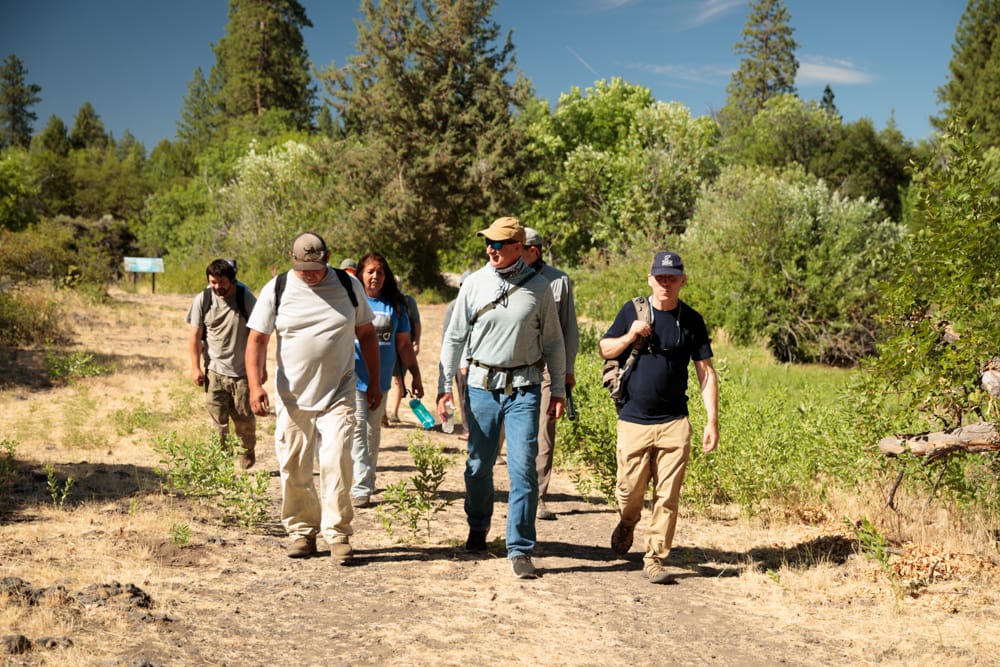
Extraordinary hydrology
The Medicine Lake Highlands, heaved and twisted by volcanic activity, is crowned by the largest shield volcano in North America. This unusual landscape feature presides over a rare treasure: an enormous reserve of cold, clean water.
It is estimated that the Medicine Lake Highlands filter and store as much water as California’s 200 largest surface reservoirs combined.
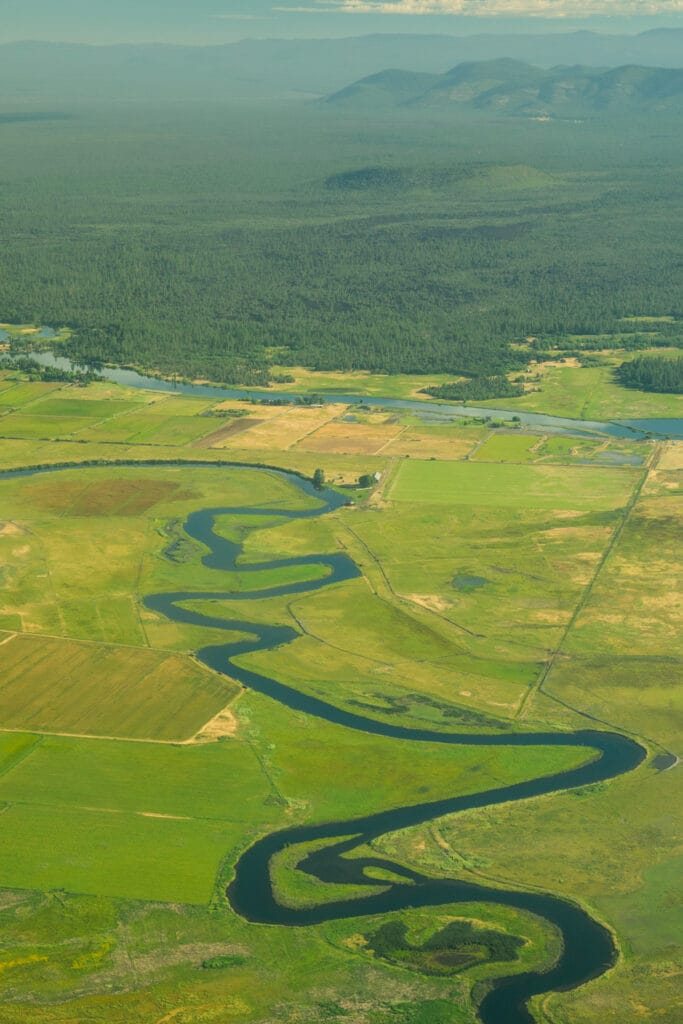
A big slug of this water works its way underground 50 miles or more and comes to the surface as one of the largest complexes of freshwater springs in the West. These springs well up in and around Ahjumawi Lava Springs State Park – the only park in the system accessible solely by watercraft.
These springs coalesce to form the Fall River, one of California’s best and most scenic trout streams.
The Fall River, and the wide, lovely valley through which it flows, is the ancestral homeland of one the eleven bands of the Pit River Tribe. They call themselves Ahjum (water) awi (people)––the people of the water.
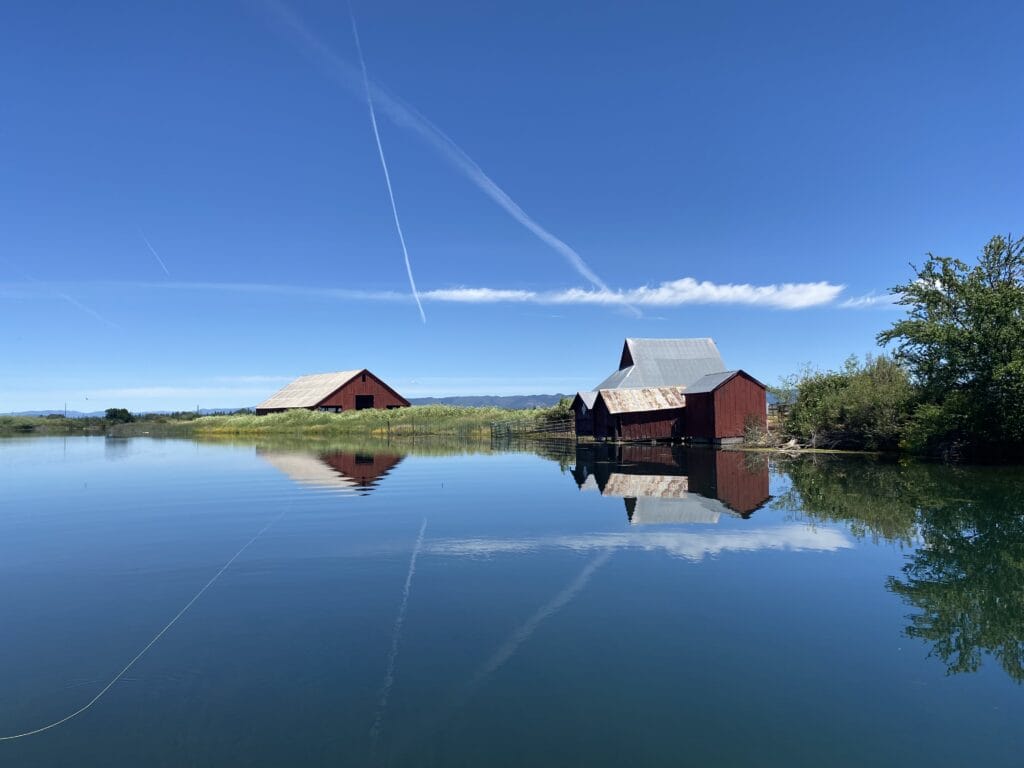
And, wow, this water. The aqua waters of the Fall River Springs complex are so clear they seem more of the sky than earth-bound. And the volume of water coming up from the depths here is astounding.
A distinct population of native rainbow trout has evolved in the Fall River system. The Ahjumawi harvested these trout and other fishes in rock traps constructed in some of the small inlets around the springs complex in what is now the state park.
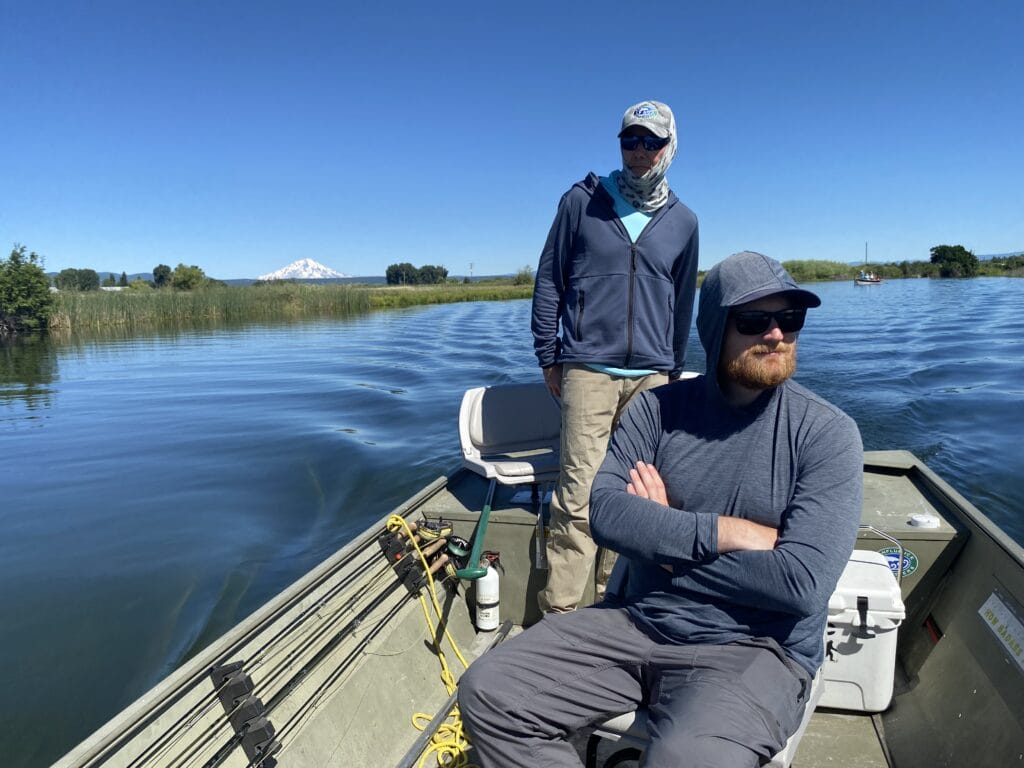
No one knows exactly how old these traps are, including Ginger Amaroso, the dynamic representative for the Ahjumawi band who recently guided me and a group of other anglers on a short walk through a portion of her homeland.
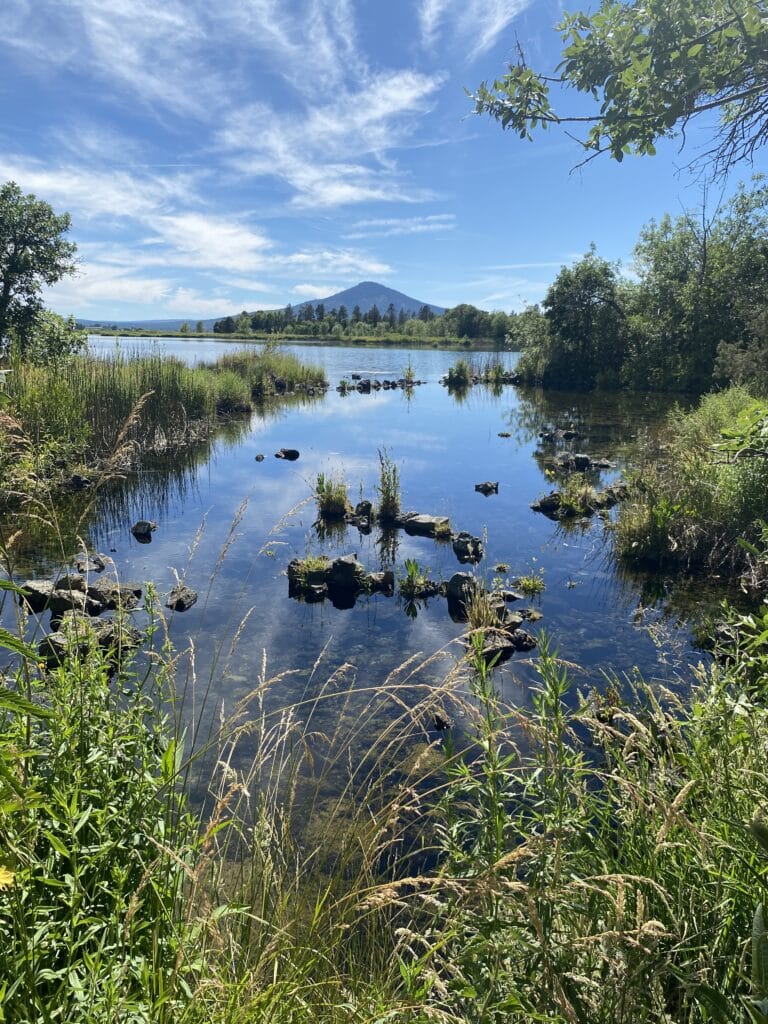
Along the way, we found plenty of black bear scat and other evidence of the many species of terrestrial wildlife that call this area home.
We crossed a footbridge spanning a bottleneck between one set of springs and another. The flow between these two water bodies was that of a small river––three feet deep and twelve feet across. In a state beset by chronic water shortages, it was a startling display of aquatic abundance.
All of it sourced in the Medicine Lake Highlands.
Ahjumawi
A flotilla of boats from Confluence Outfitters transported our little tour group that afternoon to the wonderland of Ahjumawi. But that wasn’t the only place this capable crew took us. That morning, four terrific guides motored us out on the Fall River in search of this stream’s famously chunky trout.
These are not your garden variety wild trout. They are especially vigorous thanks to the Fall’s water, gelid even on the hottest days, which consistently unleashes dense hatches of mayflies, caddies and midges.
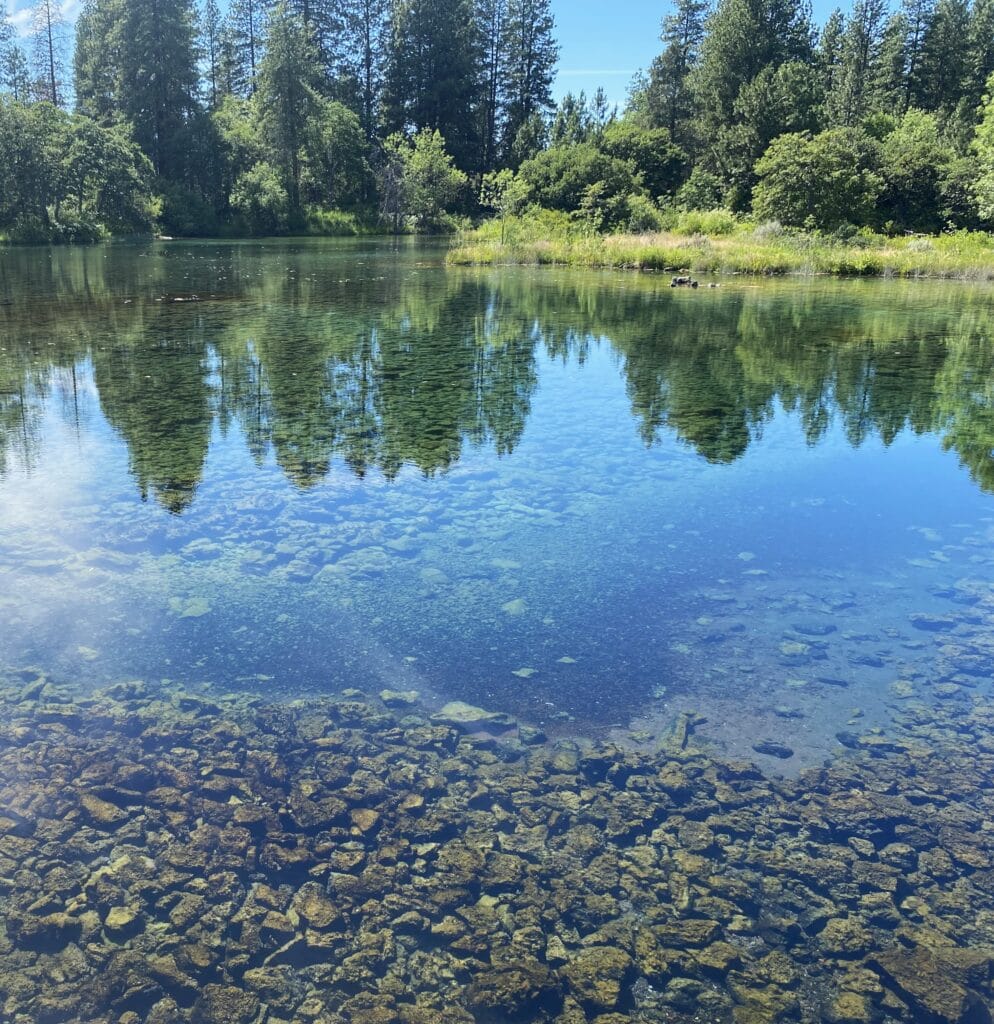
The remarkable hydrology and water quality of the Fall River springs and river system have allowed these trout to evolve two different life histories––one sub-population of native Fall River rainbows spawns in the fall, like virtually all other O. mykiss, and the other spawns in the spring, in the uppermost reaches of the river.
On the Fall, often you are basically sightfishing. The water is so clear that in its deepest runs you can see the trout––some pushing steelhead size––moving around. A common strategy is to find a few fish, anchor upstream and fish down to them.
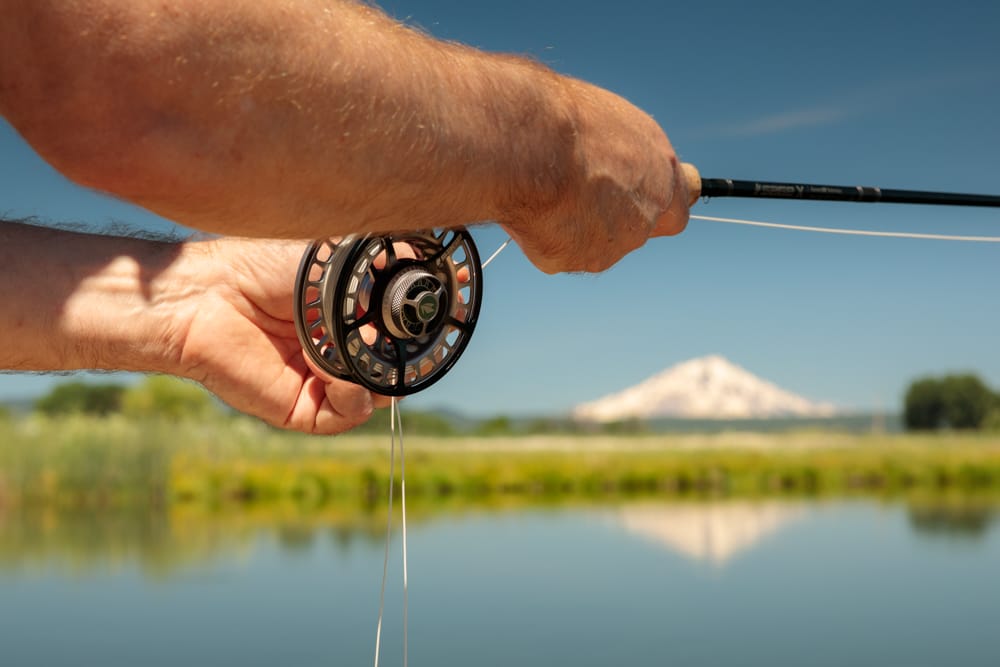
These discriminating trout will eat a decent presentation. Whether you land them or not is another matter.
I fished a small leech on an intermediate sinking line, while my boat-mate Dan fished a nymph under an indicator fly. Dan got numerous grabs and boated a solid one. I managed a short tussle with a decent fish. Then, distracted by the iconic red barns on the riverbank in fields of bright green hay, the limpid glassy curves of the river, the glorious hulk of Mt. Shasta looming like a titan over all, I trout-set on another grab and missed a bigger fish.
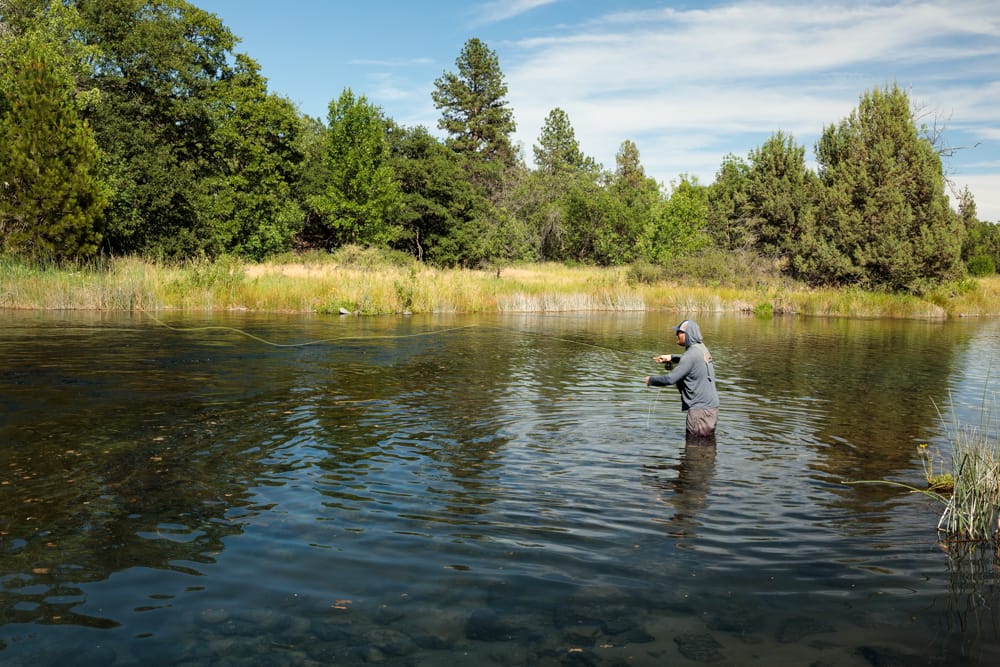
The visuals around us were such a good excuse for this gaffe that I tried to make up for it by doing the same thing a few minutes later.
The Ahjumawi band of the Pit River Tribe are the People of the Water. Perhaps trout anglers are water people, too.
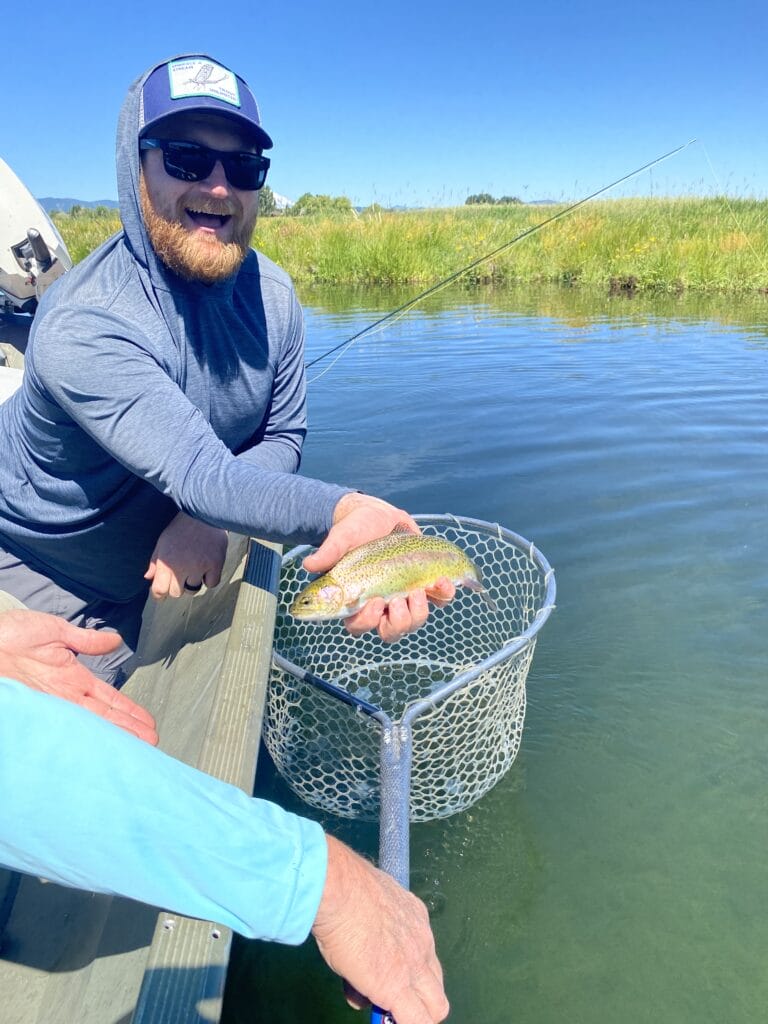
We can act to sustain our sporting heritage
The natural resources of Sáttítla have been a target for development for many years––and for as long the Pit River Tribe and other Indigenous peoples for whom Sáttítla is sacred have been defending this place and all that it means, culturally, ecologically, and, if not intentionally, as the source of a unique and exceptional trout fishery.
Across the West, we are depleting groundwater resources and losing aquatic and terrestrial habitat at an alarming rate. We must do everything we can to protect those few places we have left, like Sáttítla, that still provide these values in spades.
The Sáttítla area qualifies in every way to be a national monument, and this designation will help sustain our sporting heritage.



